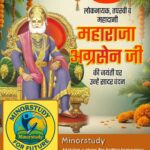Sushruta Samhita: History, Facts, Timeline, and Its Powerful Impact on Life and Society
Introduction
The Sushruta Samhita is not just an ancient medical text; it is a timeless legacy that laid the foundation of surgery, anatomy, and holistic health in India and across the world. Attributed to Sage Sushruta, this Sanskrit masterpiece is a comprehensive compendium of medicine and surgery that resonates with relevance even in the 21st century.
- Introduction
- History of Sushruta Samhita
- Timeline
- Fascinating Facts
- FAQs
- 1. Who was Sushruta?
- 2. What is the Sushruta Samhita?
- 3. Is it still relevant today?
- 4. Can one study it today?
- 5. What makes it unique?
- Significance in Indian and Global Health
- Observance and Cultural Legacy
- Daily Life Impacts
- 1. Hygiene and Sanitation
- 2. Healthy Diet and Lifestyle
- 3. Mental Health
- 4. Preventive Approach
- 5. Ethical Medicine
- Wishing from Sushruta’s Wisdom
- Summary of Key Points
- Conclusion: Why Sushruta Samhita Still Matters
In this human-friendly, reader-centered article, we will explore more than 1200 words worth of historical depth, significance, real-life impact, and inspiration from the Sushruta Samhita.
History of Sushruta Samhita
Dating back to between 600 BCE and 1000 BCE, the Sushruta Samhita is one of the three foundational texts of Ayurveda, the others being the Charaka Samhita and Ashtanga Hridayam.
Sage Sushruta, often revered as the father of surgery, compiled this encyclopedic work that covers over 1120 conditions, surgical procedures, medicinal plants, and ethical medical practice. He was a practicing physician who taught at the ancient Takshashila University, one of the oldest universities in the world.
Timeline
- ~1000 BCE: Oral traditions of Ayurvedic medicine emerge in Vedic literature.
- 600 BCE: Sushruta compiles his Samhita in Takshashila.
- 200 BCE–200 CE: Additions by later scholars and incorporation into broader Ayurvedic teaching.
- 8th–12th Century CE: Translated into Arabic as “Kitab-i-Susrud,” influencing Middle Eastern medicine.
- Modern Era: Studied globally as a precursor to modern surgery and anatomy.
Fascinating Facts
- Over 300 surgical procedures and 120 surgical instruments are detailed.
- Describes plastic surgery, including rhinoplasty (nose surgery), centuries before modern medicine.
- Emphasizes preventive healthcare, hygiene, and diet as central to healing.
- Advocates for ethical conduct, bedside manners, and patient respect.
- Includes mental health practices, stress management, and meditation.
FAQs
1. Who was Sushruta?
A pioneering Indian sage and surgeon known as the father of surgery.
2. What is the Sushruta Samhita?
An ancient Sanskrit medical text detailing surgery, anatomy, diseases, and holistic healthcare.
3. Is it still relevant today?
Yes. Many concepts like hygiene, preventive care, and even surgical methods laid groundwork for modern practices.
4. Can one study it today?
Yes. Ayurvedic colleges and global scholars include it in traditional and comparative medicine programs.
5. What makes it unique?
Its detailed surgical methods, ethical considerations, and holistic health approach.
Significance in Indian and Global Health
Revolutionary Surgical Science
Sushruta’s detailed surgical techniques include methods like:
- Cataract surgery
- Caesarean section
- Bone setting and fracture treatment
- Hemorrhage control
Holistic Health Vision
Sushruta Samhita integrates mind, body, and spirit—a concept now embraced in modern integrative medicine.
Ethical Practice
Doctors were expected to have integrity, compassion, and humility—a timeless standard.
Global Influence
When translated into Arabic and Persian, the text shaped Islamic medicine and, later, Western medicine during the Renaissance.
Observance and Cultural Legacy
While not directly observed like festivals, National Ayurveda Day in India (celebrated on Dhanvantari Jayanti) honors the legacy of ancient Ayurvedic scholars like Sushruta.
Many Ayurvedic institutions perform Sushruta Smriti Divas, remembering his teachings and contributions.
Daily Life Impacts
1. Hygiene and Sanitation
Sushruta emphasized clean surgical tools and antiseptic methods long before germ theory was discovered.
2. Healthy Diet and Lifestyle
Nutrition, seasonal eating, and balanced routine were crucial components of healing.
3. Mental Health
Incorporates guidance on stress, anger, grief, and emotional well-being.
4. Preventive Approach
Teaches proactive health practices—still foundational to Ayurveda today.
5. Ethical Medicine
Upholds compassion, communication, and non-commercial patient care.
Wishing from Sushruta’s Wisdom
“May your path to health be guided by wisdom, integrity, and harmony. May you learn to heal not just the body, but also the soul, just as Sushruta envisioned.”
Summary of Key Points
- Author: Sage Sushruta.
- Date: ~600 BCE.
- Language: Sanskrit.
- Content: Surgery, anatomy, ethics, and holistic medicine.
- Global Impact: Influenced medical practices in Asia, the Middle East, and Europe.
- Modern Relevance: Foundation of Ayurvedic medicine and modern surgical ethics.
Conclusion: Why Sushruta Samhita Still Matters
The Sushruta Samhita isn’t just a medical manual from the past—it’s a living philosophy of healing, compassion, and ethical care. In an age overwhelmed by synthetic medicines and depersonalized healthcare, Sushruta’s insights invite us back to the roots of patient-centric, nature-aligned, and morally grounded healing.
Its timeless truths not only reflect the scientific acumen of ancient India but also offer practical tools for personal wellness and social responsibility. Let us remember: healing is not just about curing disease, but about restoring balance.
What you can do now:
- Read a translated excerpt from Sushruta Samhita.
- Reflect on your daily health choices—what would Sushruta recommend?
- Share the wisdom with someone who values mindful living.
“In every healer, let there be a Sushruta—in every home, a bit of Ayurveda.”








